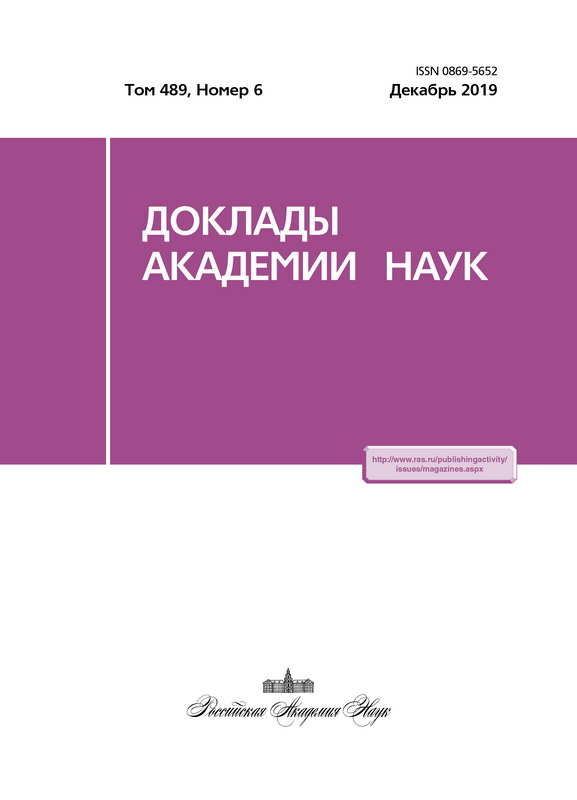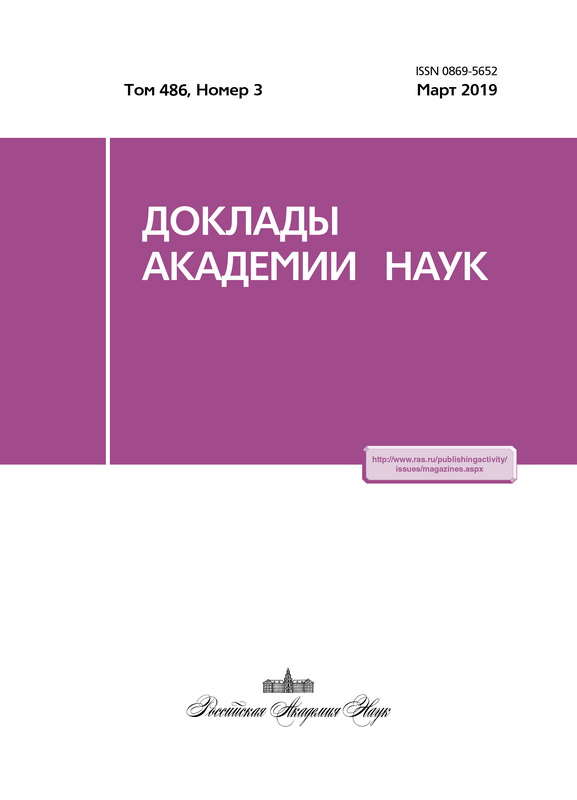Механизмы концентрирования химических элементов в торфяной залежи в восточной части Васюганского болота (Западная Сибирь)
- Авторы: Савичев О.Г.1, Мазуров А.К.1, Рудмин М.А.1, Шахова Н.Е.1, Сергиенко В.И.2, Семилетов И.П.2,1
-
Учреждения:
- Национальный исследовательский Томский политехнический университет
- Тихоокеанский океанологический институт имени В.И. Ильичева Дальневосточного отделения Российской академии наук
- Выпуск: Том 486, № 3 (2019)
- Страницы: 350-353
- Раздел: Геохимия
- URL: https://journals.eco-vector.com/0869-5652/article/view/13494
- DOI: https://doi.org/10.31857/S0869-56524863350-353
- ID: 13494
Цитировать
Аннотация
Приведены результаты минералого-геохимических исследований олиготрофного сосново-кустарничково-сфагнового участка Васюганского болота (Западная Сибирь) в зимний период 2017 г. Разработана математическая модель распространения по глубине химических элементов в водных и кислотных вытяжках торфов, органо-минеральных отложений и минерального грунта. Показано, что в торфяной залежи функционирует два комплексных геохимических барьера, связанных с изменениями фильтрационных свойств грунтов и способствующих формированию и/или накоплению в торфяной залежи соединений Fe и других химических элементов. Первый барьер (окислительный, восстановительный, сульфидный и сорбционный гидроксидный) расположен примерно на глубинах от 0,40 до 1,25 м, второй барьер (щелочной карбонатный и гидролитический, сорбционный гидроксидный, глинистый и карбонатный) - в нижнем слое торфяной залежи (глубины 2,25-2,50 м). Полученный результат важен для понимания продукционно-деструкционного цикла метана.
Об авторах
О. Г. Савичев
Национальный исследовательский Томский политехнический университет
Автор, ответственный за переписку.
Email: osavichev@mail.ru
Россия, 634034, г. Томск, проспект Ленина, 30
А. К. Мазуров
Национальный исследовательский Томский политехнический университет
Email: osavichev@mail.ru
Россия, 634034, г. Томск, проспект Ленина, 30
М. А. Рудмин
Национальный исследовательский Томский политехнический университет
Email: osavichev@mail.ru
Россия, 634034, г. Томск, проспект Ленина, 30
Н. Е. Шахова
Национальный исследовательский Томский политехнический университет
Email: osavichev@mail.ru
Россия, 634034, г. Томск, проспект Ленина, 30
В. И. Сергиенко
Тихоокеанский океанологический институт имени В.И. Ильичева Дальневосточного отделения Российской академии наук
Email: osavichev@mail.ru
Академик РАН
Россия, 690041, г. Владивосток, ул. Балтийская, 43И. П. Семилетов
Тихоокеанский океанологический институт имени В.И. Ильичева Дальневосточного отделения Российской академии наук; Национальный исследовательский Томский политехнический университет
Email: osavichev@mail.ru
Член-корреспондент РАН
Россия, 690041, г. Владивосток, ул. Балтийская, 43; 634034, г. Томск, проспект Ленина, 30Список литературы
- Shakhova N.E., Semiletov I.P., Sergienko V.I. The Contribution of the East Siberian Shelf to the Modern Methane Cycle // Herald of the Russian Academy of Sciences. 2009. V. 79. № 3. P. 237-246.
- Шахова Н.Е., Семилетов И.П., Алексеев В.А. // ДАН. 2010. Т. 430. № 4. P. 533-536.
- Сергиенко В.И., Лобковский Л.Н., Семилетов И.П. и др. // ДАН. 2012. Т. 446. № 3. С. 330-335.
- Савичев О.Г., Мазуров А.К., Пипко И.И., Сергиенко В.И., Семилетов И.П. Пространственные закономерности изменения химического состава и стока речных вод в бассейне Оби // ДАН. 2016. Т. 466. № 2. С. 202-206.
- Инишева Л.И., Дементьева Т.В., Головацкая Е.А., Порохина Е.В. Научно-исследовательский полигон «Васюганье». Программа научной экскурсии. Томск: ЦНТИ, 2003. 88 с.
- Савичев О.Г., Мазуров А.К. Временные изменения химического состава вод в восточной части Васюганского болота (Западная Сибирь) // Изв. Томск. политехн. университета. Инжиниринг георесурсов. 2018. Т. 329. № 2. С. 38-48.
- Smieja-Król B., Fiałkiewicz-Kozieł B. // Environ. Monitoring and Assessment. 2014. V. 186. № 4. P. 2573-2587.
- Гусев Е.М., Насонова О.Н. Моделирование тепло- и влагообмена поверхности суши с атмосферой. М.: Наука, 2010. 327 с.
- Savichev O.G. // Contemp. Probl. Ecol. 2015. V. 8. № 1. P. 118-124.
- Крайнов С.Р., Рыженко Б.Н., Швец В.М. Геохимия подземных вод. Теоретические, прикладные и экологические аспекты. М.: Наука, 2004. 677 с.
Дополнительные файлы







